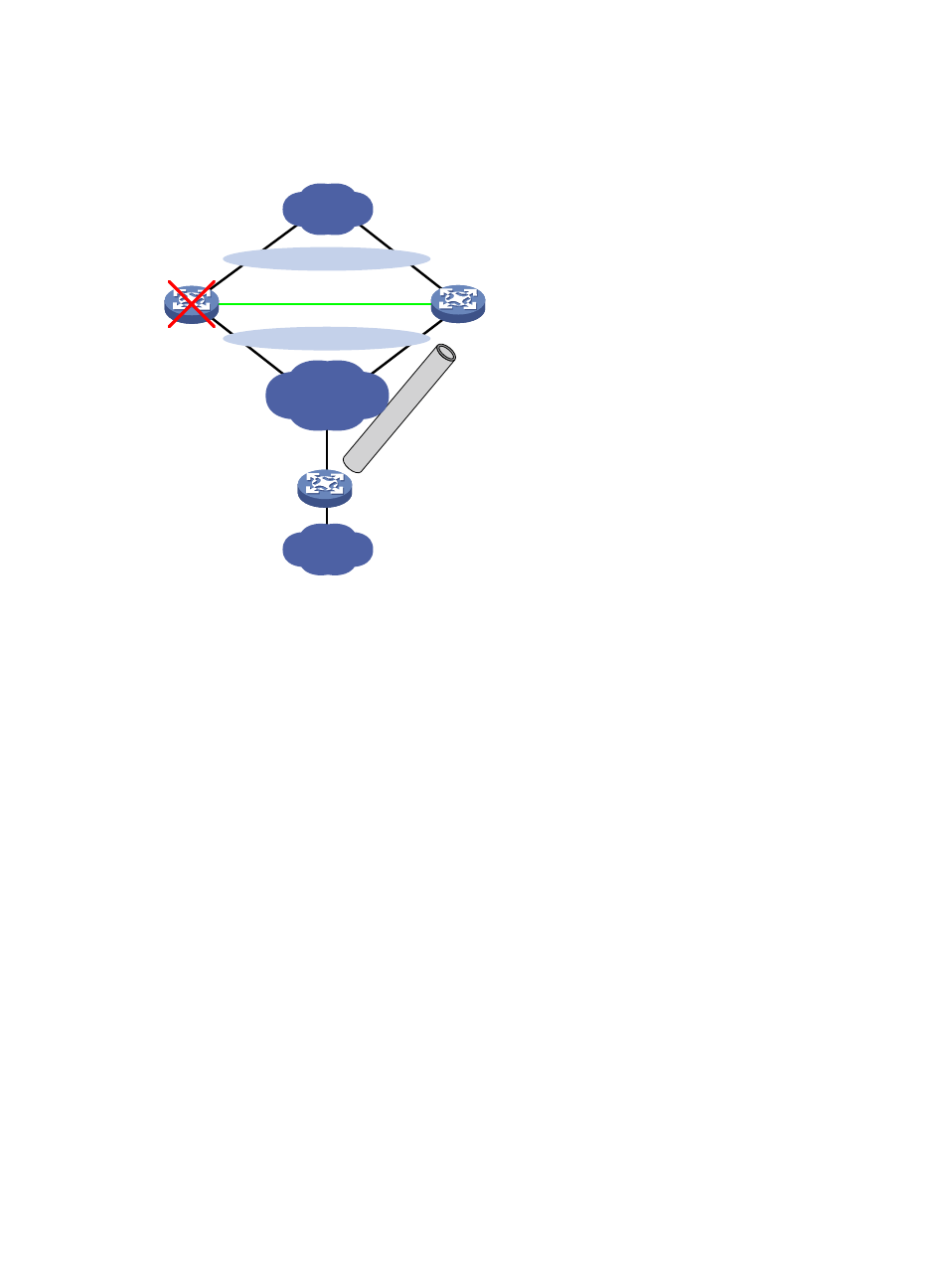Protocols and standards, Ipsec configuration task list – H3C Technologies H3C WX3000E Series Wireless Switches User Manual
Page 364

350
process is transparent to remote devices. No extra configuration is required on remote devices and no
IPsec re-negotiation is required after the switchover.
Figure 147 IPsec stateful failover
As shown in
, Device A and Device B form an IPsec stateful failover system and Device A is
elected the master in the VRRP group. When Device A operates normally, it establishes an IPsec tunnel
to Device C, and synchronizes its IPsec service data to Device B. The synchronized IPsec service data
includes the IKE SA, IPsec SAs, and DPD packet sequence number. Based on the IPsec service data,
Device B creates standby IKE SA and standby IPsec SAs to back up the active IKE SA and active IPsec SAs
on Device A. When Device A fails, the VRRP mechanism switches IPsec traffic from Device A to Device B.
Because Device B has an instant copy of Device A's IPsec service data, Device B can immediately
process IPsec traffic to provide nonstop IPsec service.
Protocols and standards
•
RFC 2401, Security Architecture for the Internet Protocol
•
RFC 2402, IP Authentication Header
•
RFC 2406, IP Encapsulating Security Payload
•
RFC 4552, Authentication/Confidentiality for OSPFv3
•
RFC4301, Security Architecture for the Internet Protocol
•
RFC4302, IP Authentication Header
•
RFC4303, IP Encapsulating Security Payload (ESP)
IPsec configuration task list
The following is the generic configuration procedure for implementing IPsec:
1.
Configure IPsec proposals to specify the security protocols, and authentication and encryption
algorithms.
LAN
Device A
Device B
Device C
Failover link
Master
Backup
Virtual router 1
Virtual router 2
IP
se
c
tu
nn
el
LAN
Internet
- H3C WX5500E Series Access Controllers H3C WX3500E Series Access Controllers H3C WX2500E Series Access Controllers H3C WX6000 Series Access Controllers H3C WX5000 Series Access Controllers H3C LSWM1WCM10 Access Controller Module H3C LSUM3WCMD0 Access Controller Module H3C LSUM1WCME0 Access Controller Module H3C LSWM1WCM20 Access Controller Module H3C LSQM1WCMB0 Access Controller Module H3C LSRM1WCM2A1 Access Controller Module H3C LSBM1WCM2A0 Access Controller Module H3C WA3600 Series Access Points H3C WA2600 Series WLAN Access Points H3C S10500 Series Switches H3C S5800 Series Switches H3C S5820X Series Switches H3C S12500 Series Switches H3C S9500E Series Switches H3C MSR 5600 H3C MSR 50 H3C MSR 3600 H3C MSR 30 H3C MSR 2600 H3C MSR 20-2X[40] H3C MSR 20-1X H3C MSR 930 H3C MSR 900 H3C SR8800 H3C SR6600-X H3C SR6600 H3C SecPath F5020 H3C SecPath F5040 H3C VMSG VFW1000
